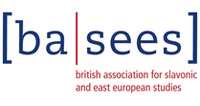Authors
Kateryna Budz1; 1 The University of Edinburgh, UK Discussion
During the Second World War, the West Ukrainian region of Eastern Galicia came under Soviet rule. In 1946, the Soviet regime banned the Ukrainian Greek Catholic Church (UGCC), the Eastern-rite Catholic Church that united most Ukrainians in the region. The abolition of the UGCC took the form of an allegedly voluntary ‘reunion’ with the Russian Orthodox Church (ROC) under the rhetoric of return to the ‘faith of your ancestors.’ As a result of the state pressure, most parish priests formally joined the ROC, whereas a part of the clergy resisted ‘reunion’ despite the large-scale persecutions.
While the Eastern-rite Catholic Churches were not legally banned in Poland and Hungary, they were ‘reunited’ with the Orthodox Churches in the post-war USSR, Romania and Czechoslovakia. In Romania, the GCC was forcefully incorporated into the Romanian Orthodox Church. In Czechoslovakia, where Roman Catholic Church was the dominant Church, the GCC was merged with Russian Orthodoxy. In 1951, however, the Czechoslovak Orthodox Church became autocephalous. In contrast, the Ukrainian Greek Catholics were ‘reunited’ with the Moscow Patriarchate of the ROC, which evoked nationally motivated resentment.
Based on the rich archival and oral history material, the present paper demonstrates how the anti-Orthodox sentiments of believers in post-war Galicia strengthened their adherence to Latin ritual practices, not only in the milieu of the Greek Catholic underground, but also in the officially ‘reunited’ parishes. While considering the attitudes of the Greek Catholic priests, both ‘reunited’ and ‘non-reunited’ ones, the paper focuses specifically on the attitudes of ordinary believers.
In contrast to the interwar period, when attending a Roman Catholic church by a Ukrainian Greek Catholic might have been considered as in danger of leading to Polonization, such practice became increasingly popular among the members of the outlawed UGCC during the Soviet period. For those opposing the ‘reunion,’ unity with the Catholic Church became more important than language or ritual.
Given the forced nature of post-war Orthodoxization, the clandestine Greek Catholics perceived Latin ritual practices as identity-strengthening. In contrast, they often regarded the UGCC’s Byzantine heritage as identity-threatening. For this reason, the Eastern liturgical reforms of the Second Vatican Council (1962-1965), which aimed, among other things, at purification of the ritual from the Latin influence, were hugely unpopular in the Church underground.
What is more striking, those parishes in Galicia which officially became Orthodox after 1946, often demonstrated similar resistance to purification of the church interior from the Latin elements. This was specifically the case after 1961, when the Soviet authorities demanded these particular changes. The passive resistance on the part of the ‘reunited’ parishes suggests that, despite a 
